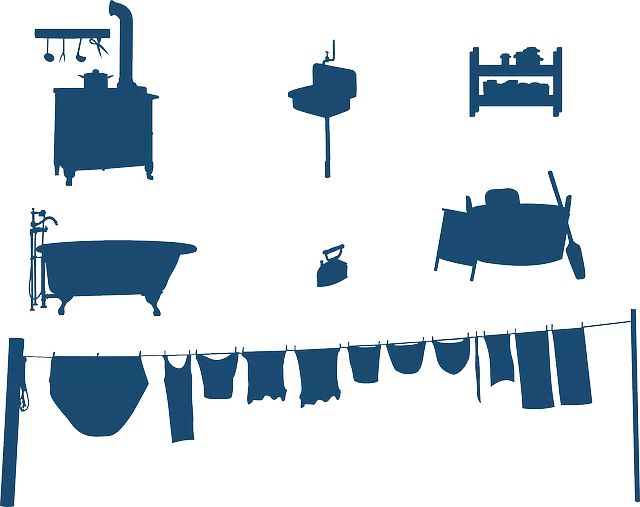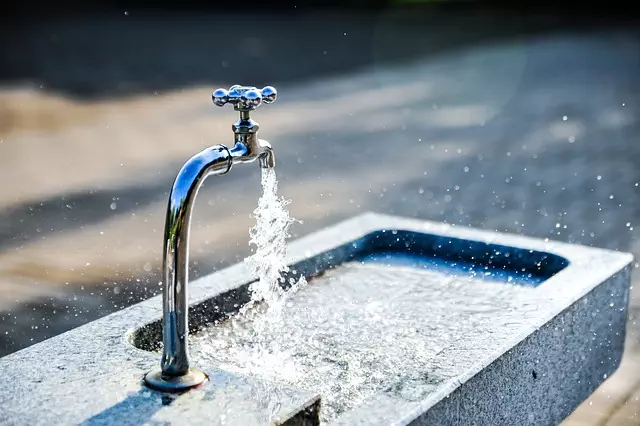Sink P-traps are crucial for maintaining a hygienic home by trapping sewer odors and gases in kitchen and bathroom sinks. Regular cleaning and inspection prevent clogs, leaks, and other plumbing issues. This guide equips homeowners with knowledge to perform DIY sink P-trap repairs using essential tools like wrenches, pliers, plumber's tape, and pipe compound. By following simple steps for removal, inspection, and replacement, homeowners can independently address common kitchen (Sink Repair Toledo) and bathroom (Bathroom Sink Repair) plumbing issues. Regular maintenance and avoiding non-biodegradable materials further minimizes repair needs.
Need expert advice on fixing that stubborn sink? Whether it’s a clogged drain or a leaky P-trap in your Toledo home, our guide has you covered. We’ll walk you through understanding sink P-traps, identifying common issues, and mastering the repair process with simple tools and materials. Learn effective preventive measures to avoid future headaches. Get ready to tackle your kitchen or bathroom sink repair like a pro!
- Understanding Sink P-Traps and Their Function
- Common Issues and Causes of Sink P-Trap Failure
- Tools and Materials Required for Repair
- Step-by-Step Guide to Fixing a Clogged or Leaking P-Trap
- Preventive Measures and Tips for Future Maintenance
Understanding Sink P-Traps and Their Function
Sink P-traps are an essential component in both kitchen and bathroom sink setups. These U-shaped pipes play a crucial role in household plumbing by trapping odours and gases from sewer lines, preventing them from flowing back up into your home. The design of a P-trap creates a water seal that blocks unwanted fumes, ensuring a fresh and odourless environment. This simple yet effective mechanism is a common fixture in many homes, making it vital for homeowners to understand its function and know how to perform basic repairs when issues arise.
For residents in Toledo or elsewhere seeking sink repair services, understanding the role of P-traps is an important first step. Whether it’s a kitchen sink repair or bathroom sink fix, identifying problems with these traps can help homeowners effectively communicate their concerns to professional plumbers. Regular maintenance and prompt repair of P-traps can prevent potential clogs, leaks, and other plumbing disasters, ensuring your home remains a comfortable and hygienic space.
Common Issues and Causes of Sink P-Trap Failure
Sink P-traps, essential components of your plumbing system, often face various issues leading to their failure. Common problems include clogs, leaks, and odours. These issues typically arise from several causes. Debris accumulation, such as grease, food particles, and hair, can block the drain, causing clogs. Over time, corrosion or damage to the P-trap’s seal or joints can result in leaks. Moreover, the P-trap’s curved design can attract and retain odours from wastewater.
In Toledo and surrounding areas, whether it’s a kitchen sink repair or bathroom sink repair, addressing these issues promptly is crucial. Neglecting P-trap maintenance can lead to more severe plumbing problems. Regular cleaning and inspection are key to preventing failure. Understanding the causes of these issues equips homeowners with the knowledge to implement preventive measures and ensure the longevity of their sink P-traps.
Tools and Materials Required for Repair
When tackling a sink P-trap repair, whether it’s for your kitchen or bathroom sink in Toledo, having the right tools and materials is essential for a successful DIY project. For this task, you’ll need a few basic items to effectively address any issues with your sink’s drainage system. Start by gathering a wrench set, including adjustable or pipe wrenches, as these are handy for tightening or loosening pipes. A pair of pliers will also come in useful for gripping and manipulating smaller components.
Don’t forget to include some essential materials like replacement P-traps, which are typically made of plastic or brass. You might also need plumber’s tape or pipe compound to ensure a secure seal. Having these tools and materials readily available will enable you to tackle the repair efficiently, saving you time and potentially costly trips to the hardware store, specifically for kitchen sink repair or bathroom sink repair in Toledo.
Step-by-Step Guide to Fixing a Clogged or Leaking P-Trap
If your sink is clogged or leaking, don’t panic; fixing a P-trap is a straightforward DIY project for any homeowner. Here’s a step-by-step guide to help you with both issues, ideal for those looking for Sink Repair Toledo or Bathroom Sink Repair solutions. First, gather the necessary tools: a wrench or pliers, new P-trap (ensure it’s the right size), and some plumbing tape. Then, turn off the water supply valves under the sink using the wrench to prevent any leaks while you work. Next, loosen and remove the existing P-trap by unscrewing it counterclockwise. Once removed, inspect for damage or debris causing the clog or leak. Clean out any obstructions and replace the P-trap, securing it with plumbing tape. Finally, turn on the water valves and check for leaks, ensuring a tight seal. If all is well, your sink should be as good as new for both Kitchen Sink Repair and beyond!
Preventive Measures and Tips for Future Maintenance
Regular maintenance is key to preventing future sink P-trap issues in both kitchen and bathroom settings. A simple yet effective preventive measure is to check the P-trap for any signs of damage, corrosion, or leaks on a monthly basis. This easy inspection can help catch potential problems early, saving you from more costly repairs down the line.
For ongoing care, consider using drain maintenance products designed to clear clogs and prevent buildup. Additionally, avoiding pouring grease, coffee grounds, or other non-biodegradable materials down the sink drain can significantly reduce the risk of clogs. Remember, proactive measures like these not only benefit you in Toledo but are valuable tips for anyone looking to keep their kitchen or bathroom sink repair needs minimal.


